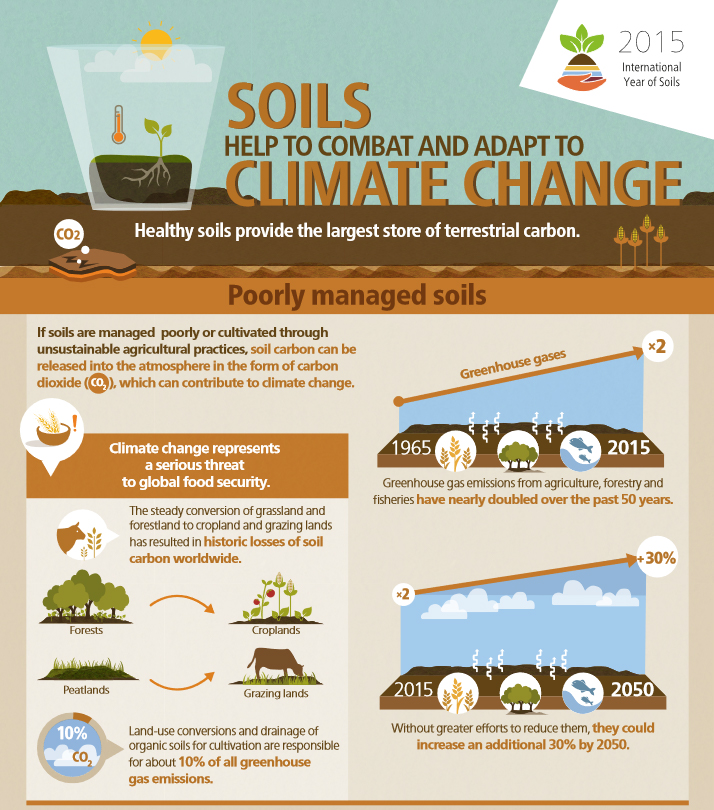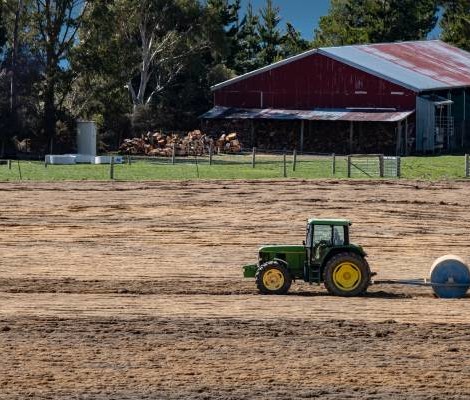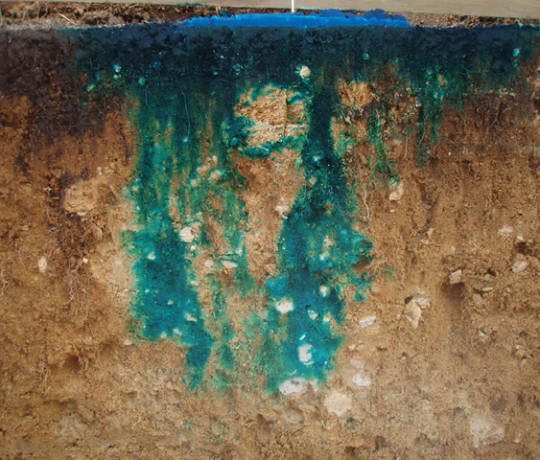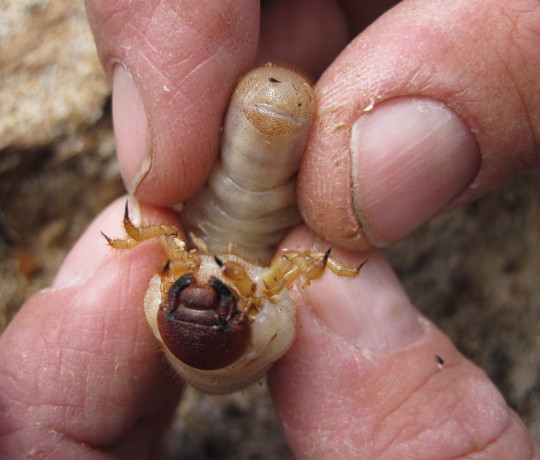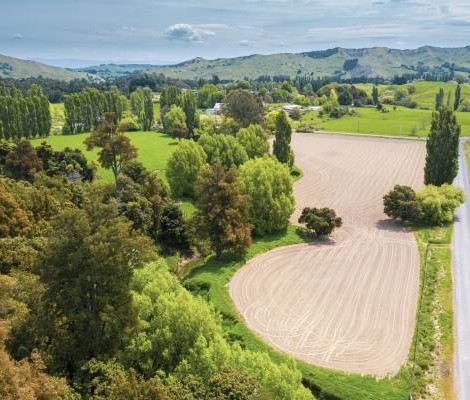Soils and climate
A substantial part of the pore space of soil is filled by air. The composition of soil air is different from atmospheric air, though.
Soil air contains a much greater proportion of carbon dioxide and a lesser amount of oxygen; at the same time, soil air contains a far greater amount of water vapour than atmospheric air
What exactly constitutes soil air at a given moment in time depends on a wide range of factors such as soil type, soil condition, type of crop, microbial activity, season etc.
Understanding soil aeration is vital for soil management, as some practices tend to compact the soil and reduce pore space, affecting gas exchange between the soil and the atmosphere. But it is also important in the context of a changing climate. Why is this?
As pointed out in the section on Soils and Biodiversity, soils are very much alive, and breathing. Now factor in that the amount of carbon in soils is vast: Globally, soils contain some estimated 1500 Gt (this is: gigatons = billion tons) of carbon, about twice of total carbon dioxide in the atmosphere. Land management impacts and alters the soil carbon pool, e.g. through ploughing and mineral fertilizer application; but also through land use conversions from grassland and forests to cropland and grazing. It is estimated that land-use conversions and drainage of organic soils for cultivation alone are responsible for about 10% of all greenhouse gas emissions.
Vice versa, a changed climate will impact on soils. When rainfall events become more frequent and more intense (“erosive”) during severe storms, soil erosion rates will be increasing, with significant negative implications for food production and water quality. We also know that key soil chemical properties such as soil organic carbon or pH are rather sensitive to climate variables such as rainfall and temperature. In our coastal areas, sea-level rise causes increased saltwater intrusion and groundwater salinization, compromising the availability of fresh water, including that used for drinking and farm and garden irrigation. Also, drought conditions are predicted to increase in larger part of New Zealand, increasing the soil moisture deficit over the summer months.
The good news is that if soils can be part of the solution here. The fact that they play such an important role in climate change also means that we can use wise soil management to alleviate the effects of climate change. Adopting sustainable soil management practices or restoring degraded land where possible will go a long way!
A no-regrets strategy in most cases is to maintain or increase the soil organic carbon content (SOC). This is because past and current land management schemes have tended to exploit SOC stocks. Saving or ‘sequestering’ more carbon into the soil can have multiple benefits, from enhanced soil life, improved soil structure and increased water infiltration, to increasing plant-available water capacity.
Continue reading on the topic of soils and climate change
- Regenerative Agriculture, Soil Health and Climate Change
Four reports outlining possible approaches to test whether regenerative agriculture can indeed offer nature-based’ solutions for climate change in New Zealand. Reports page - Growing Kai Under Increasing Dry
A 'Our Land & Water' National Science Challenge report providing insights from a series of events that brought together farmers, growers, industry bodies, researchers and government to discuss how the primary sector can adapt to drought caused by climate change. Report page - Scientific publication
Whitehead D. et al. (2021): Regional and national changes in soil carbon stocks with land‑use change from 1990 to 2016 for New Zealand. Regional Environmental Change 21:121. https://doi.org/10.1007/s10113-021-01837-4 - Scientific publication
Kirschbaum M.U.F. et al. (2021): Sequestration of soil carbon by burying it deeper within the profile: A theoretical exploration of three possible mechanisms. Soil Biology and Biochemistry 163: 108432. https://doi.org/10.1016/j.soilbio.2021.108432
